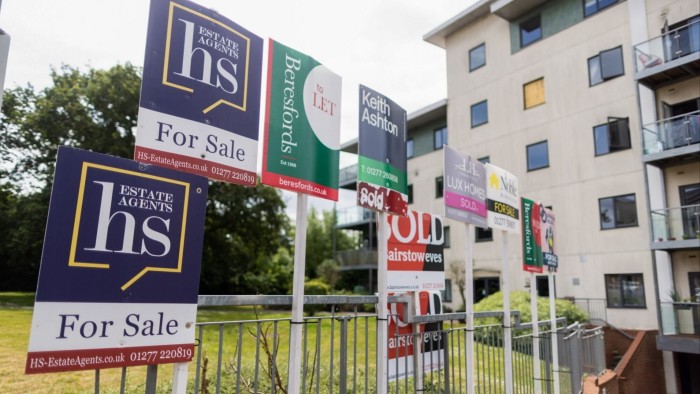Unlock the Editor’s Digest for free
Roula Khalaf, Editor of the FT, selects her favourite stories in this weekly newsletter.
Barclays has become the first major UK lender to cut its mortgage rates in response to changing interest rate expectations as markets price in US President Donald Trump’s volatile tariffs policy.
Barclays cut its mortgage rates below the symbolic 4 per cent threshold to 3.99 per cent on two-year fixed, three-year fixed and five-year fixed mortgages with a deposit of at least 40 per cent.
The cut follows several smaller lenders lowering rates since last week when Trump imposed tariffs from 10 to 50 per cent on most of the US’s trading partners. On Wednesday, the US president paused most of these levies but intensified his trade war with China.
“Even with the President’s 90-day reprieve, risks to the growth outlook have clearly risen in the past four weeks,” said Hina Bhudia, partner at Knight Frank Finance.
She said the swap rates on which lenders price their fixed-term mortgage deals have fallen as markets increased their expectation for the number of rate cuts this year.
Those expectations have moderated since Trump delayed the wide-ranging tariffs on dozens of countries. Traders are now pricing in three base rate cuts by the end of the year.
Five-year swaps fell from just above 4 per cent at the end of March to as low as 3.7 per cent, before moving back to 3.78 per cent.
Barclays’ price cuts come after smaller lenders, including TSB and the Coventry Building Society, made similar moves earlier this week. Coventry also cut rates below 4 per cent on a two-year fixed rate mortgage with a deposit of at least 35 per cent.
The average five-year mortgage rate fell to 5.14 per cent on Thursday, down from 5.21 per cent a month ago. Two-year rates were slightly higher on average at 5.29 per cent.
The cheapest rates are typically available to homebuyers with low loan-to-value ratios. Even so, estate agents consider rates below 4 per cent a big positive for encouraging property market activity.
However, any boost to home sales could be outweighed if global trade disruption hurts consumer confidence or the UK economy and jobs market.
Nicholas Mendes, technical manager at broker John Charcol, said the recent cuts reflected “a broader shift in interest rate expectations . . . driven by fears that a prolonged trade war could slow global growth”.
“Since President Trump’s so-called ‘liberation day’ announcement, there has been a sharp change in market sentiment. Just over a week ago, markets were expecting two further Bank of England rate cuts this year,” he said.
While brokers expect the trend of lower rates to continue, Mendes cautioned that lenders might be slow to pass on lower prices to consumers due to uncertainty around trade policy, inflation and the broader economic outlook.
Banks and building societies might also be keen to avoid losing customers to cheaper offers after having agreed, but not completed deals at higher rates.
“I would not expect every lender to [cut rates] straight away,” he said. “Many have written business recently at higher rates, and larger lenders will be cautious about making sudden changes.”

